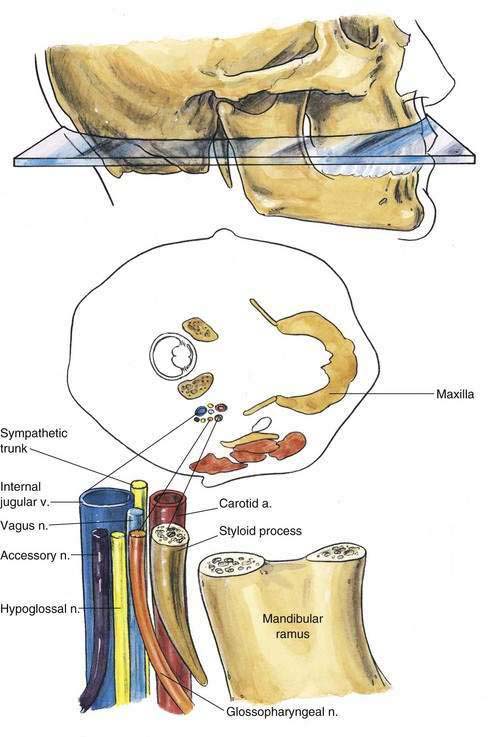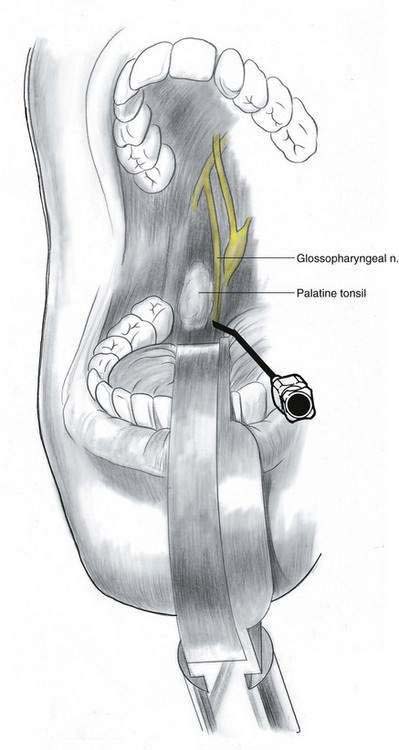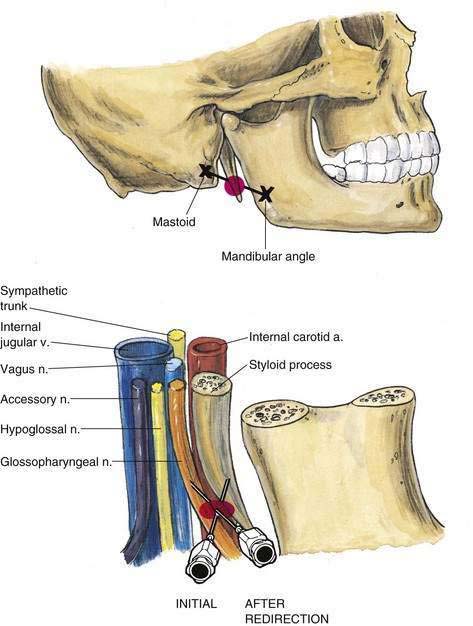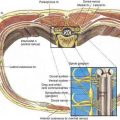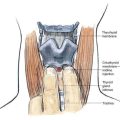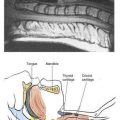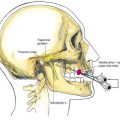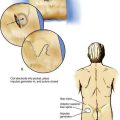28 Glossopharyngeal Block
Placement
Anatomy
The glossopharyngeal nerve exits from the jugular foramen at the base of the skull, as illustrated in Figure 28-1, in close association with other structures of the carotid sheath, vagus nerve, and styloid process. The glossopharyngeal nerve descends in the neck, passes between the internal carotid and the external carotid arteries, and then divides into pharyngeal branches and motor branches to the stylopharyngeus muscle as well as branches innervating the area of the palatine tonsil and the posterior third of the tongue. These distal branches of the glossopharyngeal nerve are located submucosally immediately posterior to the palatine tonsil, deep to the posterior tonsillar pillar.
Needle Puncture: Intraoral Glossopharyngeal Block
After topical anesthesia of the tongue, the patient’s mouth is opened widely and the posterior tonsillar pillar (palatopharyngeal fold) is identified by using a no. 3 Macintosh laryngoscope blade. An angled 22-gauge, 9-cm needle (see comment in Pearls section) is inserted in the caudad portion of the posterior tonsillar pillar. The needle tip is inserted submucosally and then, after careful aspiration for blood, 5 mL of local anesthetic is injected. The block is repeated on the contralateral side (Fig. 28-2).
Needle Puncture: Peristyloid Approach
The patient lies supine with the head in a neutral position. Marks are placed on the mastoid process and the angle of the mandible, as illustrated in Figure 28-3. A line is drawn between these two marks, and at the midpoint of that line the needle is inserted to contact the styloid process. To facilitate styloid identification, a finger palpates the styloid process with deep pressure and, although this can be uncomfortable for the patient, the short 22-gauge needle is then inserted until it impinges on the styloid process. This needle is then withdrawn and redirected off the styloid process posteriorly. As soon as bony contact is lost and aspiration for blood is negative, 5 to 7 mL of local anesthetic is injected. The block can then be repeated on the contralateral side.

